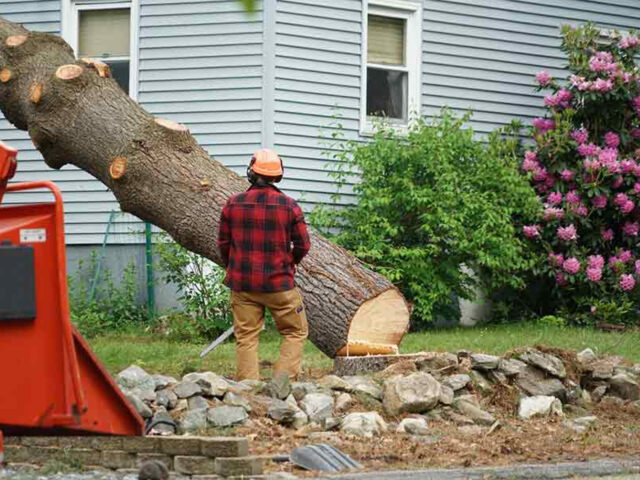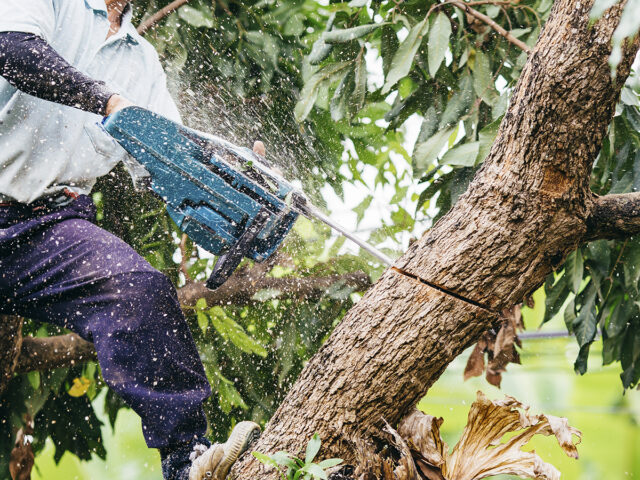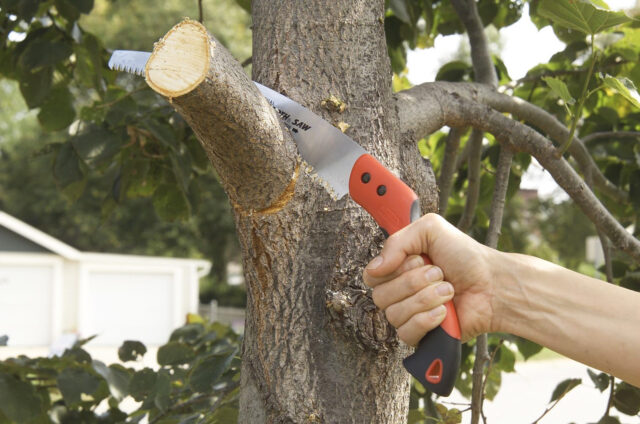
No backyard is really complete without a nice, large tree that provides you with shade, privacy, a thick branch for a swing for your kids to play on, and overall, they are just beautiful things. There are many different types of trees, in all kinds of shapes and sizes. Some lose their leaves, some stay green all year round, but, they all have one thing in common – they are a living organism. What sets living organisms apart from the rest of the things on this beautiful planet is that they live and they die and trees are no different.
No matter how much you love that old oak tree in your backyard and how many memories you have associated with it – there might come a time when you’ll have to take it down. How do you know when the time has come? Well, let’s find out together.
1. Visual Signs

There is more than one way to notice whether a tree is still alive and well or if it’s past its prime and is starting to rot and die. It’s important to note that sometimes damage you see on it is not a clear indicator that it’s time for removal. Sometimes a tree can be saved, but you have to know the difference. So, how can you tell?
Just by looking at the trunk, you could be able to spot the signs of damage and decay – if you know what to look for. If you catch it early, there is hope that it can be saved with the help of a professional. On the other hand, some damage is just a clear sign that it is time to move on.
You start by looking at the trunk. If you notice cracks on the trunk, some ‘wounds’ or just places where branches used to be but now those are just a dead stub – that’s usually a sign it’s time to call someone and have it removed. Another thing you could look out for is dead and falling branches which could also indicate that the tree is dying.
Next up, you’ll want to look near the roots, at the base of the tree. If there’s nothing unusual there – great. However, if you notice sprouts that usually indicates some structural damage. Also, any sign of fungi down there is not a good sight. Fungi appear when there’s rotting present and when there’s rot – there’s no life.
2. Root Problems

Another thing that can tell you whether your tree is up for removal is when you notice discoloration of the leaves, thinning of the treetop, or even the leaves falling when they shouldn’t be. If you notice any of those things that could mean that the root system has started to decay or it has been compromised in any way.
The root system is what keeps the plant alive. It soaks up all the water and necessary nutrients and if it is unable to do those things – the plant will inevitably die. Luckily, if you notice these problems early, that could still mean there’s time to fix things. You will have to consult with an arborist because only they can determine the seriousness of the condition and advise you on the next steps.
3. Posture

According to AlexandriaTrees.com, you can tell a lot about your tree’s condition based on its posture. Leaning is usually a sign of some kind of problem. Now, it could only mean that the plant is simply reaching for the sun, but it could also mean there’s a problem. Once again, it’s not something you’d be able to determine all by yourself so you’ll need an arborist to help you out.
In some instances, curving and leaning can be fixed, but in other cases removal might be your only option. Leaning isn’t only an eye-sore. A tree that isn’t growing straight up can potentially be dangerous because it cannot support its weight in that position.
4. Bad Structural Integrity

Structural integrity sounds like something an architect would say when talking about a tall building, but since trees also tend to be tall, they need to be structurally sound so they can grow and stay upright. However, you can’t really tell enough about its structural integrity unless you cut into it. On the other hand, what you can do is do a sound test and determine whether a tree is in good condition or not.
Weakened structural integrity usually means that the trunk is hollow in many places. You can check this to some extent by tapping a hammer or an ax against it and listening for a hollow sound. It should be relatively easy to notice this sound and if you do – it’s probably time to remove the tree as it is not quite anymore. Once again, don’t rush, maybe there’s still time and a chainsaw is not the only option. Give an arborist a call and go from there. If they determine that the removal is the best course of action – you know what to do.
5. Weakened Branches

You don’t have to wait for the braches to fall off to notice something’s not right. If you notice the thinning of the foliage that could mean that there are not enough buds on the branches. Inspect the branches and look for buds. If you don’t see any and you notice branches being brittle on top of that – that usually means that it is time for removal.
6. Location

Unfortunately, sometimes you’re forced to remove a perfectly healthy tree because it’s simply in the way. Sometimes they can be too close to power lines or our houses and you’re simply forced to get rid of it. Treetops that extend over the roof could pose a threat. A branch could break off and damage either your property or even hurt someone in the household. In these instances, it’s better to just remove it and plant one in the other place.
As you can see, there are more than a few reasons to remove a tree. Sometimes it’s just a way of life and sometimes it’s just in the way. Whatever the case is, the one thing to remember is that you should never remove a tree all by yourself. There’s a lot more to it than just firing up a chainsaw and cutting into the trunk. If you need a tree removed – hire professionals to do it for you.












